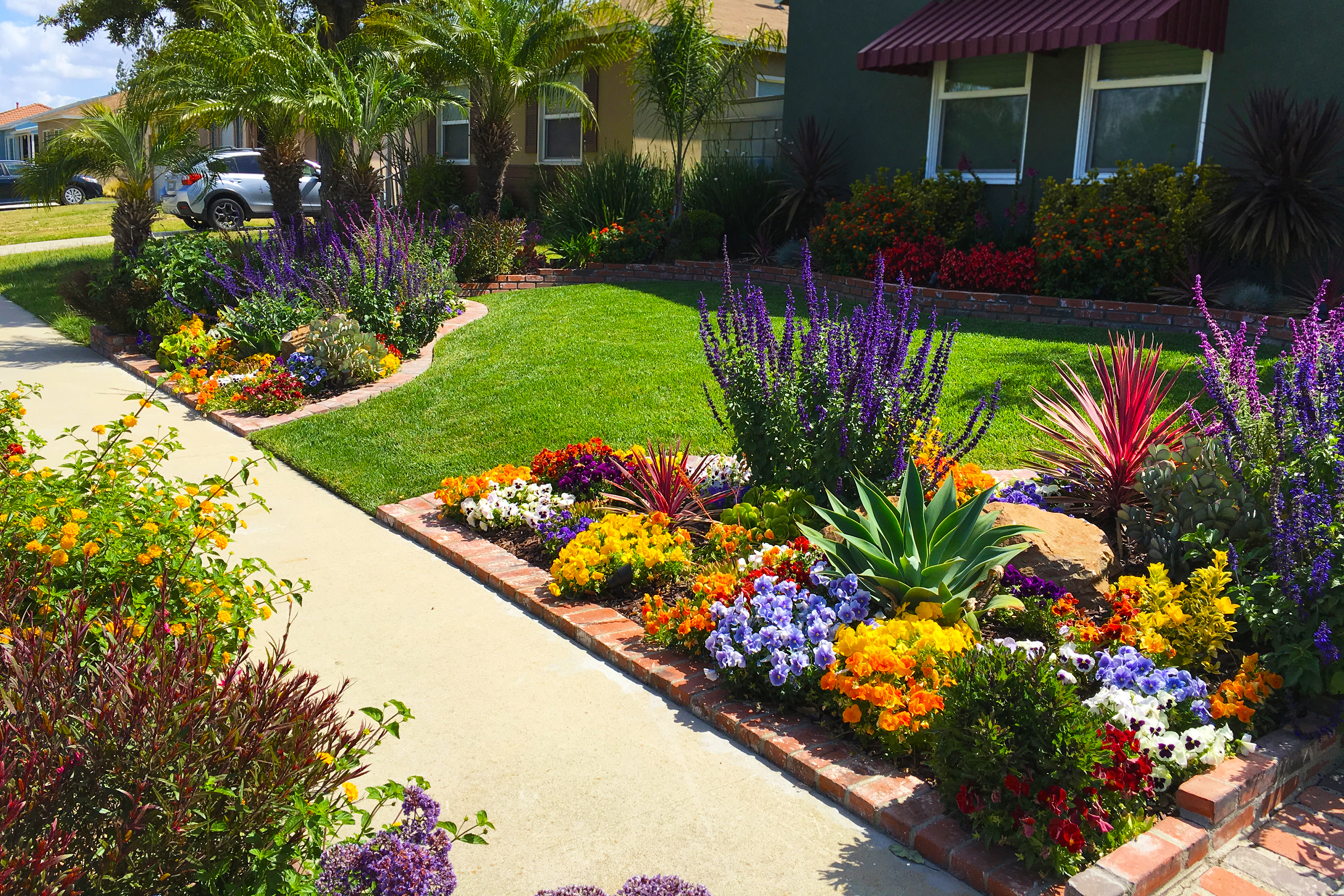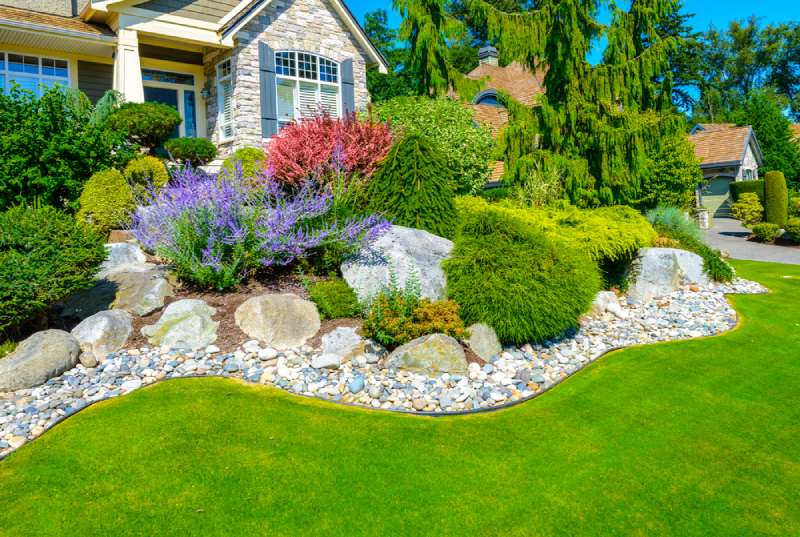Upgrade Your Residential Or Commercial Property with Personalized Palm Desert Landscaping Solutions
Upgrade Your Residential Or Commercial Property with Personalized Palm Desert Landscaping Solutions
Blog Article
A Comprehensive Guide to Creating and Implementing Effective Landscaping Solutions
The art and science of landscaping extend past plain visual appeals; they include a thoughtful combination of design principles, ecological stewardship, and sensible application. What methods can one use to guarantee these landscapes not only grow however likewise flourish in harmony with their environments?

Recognizing Landscape Design Concepts
One could wonder what foundational components add to effective landscape layout. At its core, successful landscape design hinges on several key principles that lead the setup and selection of components within an area. These principles consist of unity, balance, rhythm, and percentage, each serving to develop a harmonious outside environment.
Unity refers to the natural relationship amongst various elements, ensuring that they collaborate aesthetically and functionally. Equilibrium can be achieved with balanced or asymmetrical arrangements, enabling the landscape to really feel stable and welcoming. Percentage involves comprehending the range of components in connection to each various other and the surrounding setting, promoting visual consistency and convenience.

Examining Your Outdoor Space
Before carrying out the concepts of landscape layout, an extensive analysis of your outdoor space is important. This first analysis helps define the scope of your landscaping job and makes certain that your layout aligns with the unique qualities of your residential property. Begin by assessing the dimensions of your space, taking accurate measurements to comprehend the offered area for different aspects such as yards, paths, and outdoor patios.
Following, observe the existing attributes of your landscape, consisting of topography, dirt high quality, and drain patterns. These elements considerably influence plant choice and positioning. In addition, examine the sunshine exposure throughout various areas throughout the day, as this will certainly impact the sorts of plants that thrive in your garden.
Think about the microclimates created by frameworks, trees, and other barriers, as they can impact temperature and moisture degrees. Lastly, remember of any existing plants or hardscape components that you want to retain or get rid of. This extensive analysis lays the foundation for a educated and efficient landscape design service, making certain that your design is not only cosmetically pleasing yet additionally functional and sustainable for years to find.
Lasting Landscaping Methods
These techniques not only advertise ecological balance but additionally improve the functional and aesthetic value of a landscape. Executing reliable watering systems, such as drip watering, decreases water waste and makes certain that plants receive sufficient moisture (Palm Desert Landscaping).

Another reliable technique is the critical positioning of bushes and trees to offer all-natural windbreaks and color, hence reducing energy prices (Palm Desert Landscaping). Rain gardens can be integrated right into the landscape style to manage stormwater runoff effectively, filtering pollutants prior to they enter rivers
Choosing the Right Plant Kingdoms
Selecting the right plants for your landscape is important to attaining both aesthetic appeal and environmental harmony. The process begins with an understanding of your neighborhood climate, dirt problems, and the specific microenvironments within your landscape. Analyzing elements such as sunlight exposure, wetness degrees, and existing vegetations will help you pick plants that flourish in your unique setting.
Consider incorporating native plants, as they are well-adapted to local conditions, call for much less upkeep, and assistance regional wildlife. Additionally, selecting a diverse array of varieties can boost biodiversity while reducing the threat of condition and bug break outs. It is important to examine the growth practices, blooming durations, and seasonal shades of prospective plants to create a dynamic and cohesive landscape.
Furthermore, consider the meant use of the room; for example, if the area will certainly experience high foot web traffic, choose for resilient ground covers. By attentively selecting plants that align with both your visual goals and environmental demands, you can develop a sustainable landscape that not only boosts your building but additionally contributes favorably to the bordering community.

Application and Upkeep Strategies
When the appropriate plants have been chosen for your landscape, the focus moves to reliable implementation and continuous upkeep approaches. Successful installation begins with correct website prep work, that includes soil testing to identify nutrient levels and pH, complied with by modifying the dirt as required. Carefully arrange plants according to their growth practices and light needs, guaranteeing appropriate spacing to advertise healthy development.
Irrigation is a critical aspect of execution. Establish a watering schedule that considers the particular needs of each plant varieties, adjusting for seasonal modifications. Utilizing drip irrigation systems can boost water effectiveness and reduce drainage.
Maintenance approaches should be implemented to make certain the durability and vigor of your landscape. Regular tasks include weeding, mulching, and trimming to manage growth and protect against illness. Fertilization should be conducted based on soil examinations, providing the required nutrients without over-fertilizing.
Keeping track of for diseases and bugs is important; early detection can avoid substantial damage. Finally, seasonal changes to upkeep regimens, such as winterizing perennials and preparing for spring development, will certainly guarantee that your landscape stays aesthetically enticing and healthy and balanced year-round.
Verdict
In final thought, reliable landscaping solutions call for a detailed understanding of layout principles, precise assessment of outdoor areas, and the application of sustainable methods. The choice of suitable plant species plays a critical duty in enhancing visual allure and environmental resilience read this - Palm Desert Landscaping. Successful application and continuous maintenance even more make certain the durability and vigor of landscapes. By incorporating these components, landscapes can be changed into attractive, practical environments that advertise biodiversity and contribute favorably to area wellness.
One could wonder what fundamental elements contribute to efficient landscape style. At its core, effective landscape design hinges on a number of vital concepts that direct the arrangement and option of aspects within a space.Choosing the right plants for your landscape is critical to attaining both aesthetic charm and environmental harmony. It is crucial to evaluate the growth behaviors, flowering durations, and seasonal colors of prospective plants to develop a vibrant and natural landscape.
When the right plants have actually been chosen for your landscape, the emphasis moves to effective application and continuous upkeep see it here methods.
Report this page